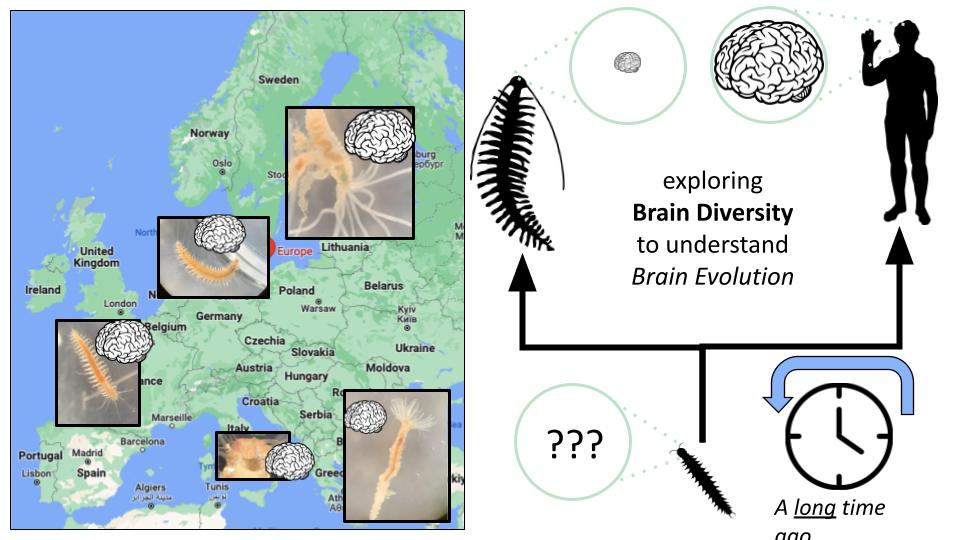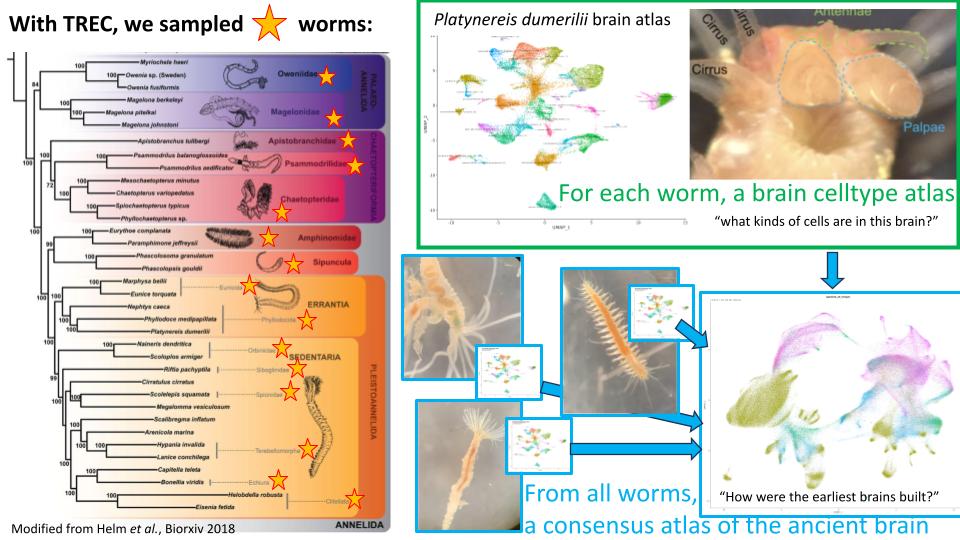
Detlev Arendt
Group Leader, Senior Scientist and Academic Mentor Postdoctoral Training
EditUnderstanding life in its natural context
Charting brain diversity and evolution with coastal European marine Annelids.
We want to learn how the earliest brains looked like. Recent research indicates that marine worm brains still hold clues to the ancient brains of all animals, clues we can’t see when we study complex brains like ours.

With TREC, we sample brains from worms found in coastal environments in Europe.
By looking at the cells different species have in common, we can find clues about how ancient animal brains worked. At the same time, we collect individuals of a single species of worm, Platynereis dumerilii, from the various locations of the TREC expedition, whether from cold, warm, or even polluted waters. From this, we will learn how brains adapt to environmental challenges.

Helm Lab, University of Göttingen

Group Leader, Senior Scientist and Academic Mentor Postdoctoral Training
Edit